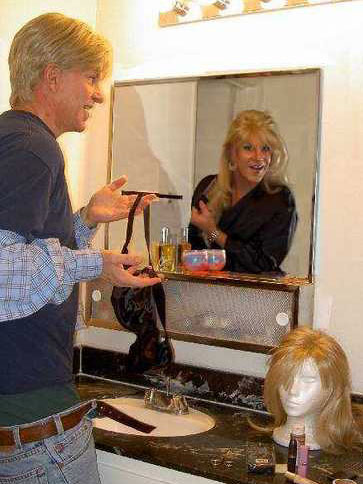 “There are few things that I enjoy more than rummaging through my well-stocked lingerie drawer for just the right combination of delicate under things.”—Jennifer Merrill
“There are few things that I enjoy more than rummaging through my well-stocked lingerie drawer for just the right combination of delicate under things.”—Jennifer Merrill
I was playing on Music Myspace and stumbled upon a page with a man dressed like a woman. I thought this person wore the outfit very well. I invited him to be my friend and told him I thought he did his dress justice. I read his profile and was shocked to learn that he was not only heterosexual, but happily married, too. Naturally, I had to learn more. He discussed it with his wife and agreed to do this interview.
“Inside every delicate man, there may just be a hot chick just waiting to make her appearance!” —Jennifer Merrill
Jen’s a Boy
When did you realize you liked to dress like a woman? What was it that sparked the interest?
On a personal level, I’ve known that I was transgendered since I was extremely young, although it took me decades to begin to understand it, and I’m still not sure that any of us really understand it completely, or know precisely where those of us who feel transgendered fit on the transgendered spectrum. From closet cross-dressers to totally feminized and passable transsexuals, from what I’ve seen over the years, our attitudes about our “gender gift” and our needs to become women, more or less, seem to evolve—to ebb and to flow—no matter where we identify ourselves at the time along the transgendered rainbow.
My earliest memories are of trying to figure out why I felt like a girl even though I knew I was a boy, at least physically, back when I was only three or four years old. Coming from an extremely sheltered, conservative home in a working class suburban area of Los Angeles, I really thought that I was the only person in the world experiencing all of the overwhelming experiences and confusion that I now know this situation invariably generates. After being caught dressed in my mom’s clothes early on (a very fashionable little black cocktail dress, color coordinated lingerie, and matching stiletto pumps—at least I had good fashion sense even then! LOL!), probably around the age of 7, I learned to be incredibly careful to avoid being caught again and that cross-dressing was certainly not a behavior that any of my friends or family would tolerate. There wasn’t a night I can remember as a child when I didn’t fall asleep praying that I would wake up the next morning as a girl.
At some point in elementary school, I remember hearing about Christine Jorgensen and her sex change operation—of course, I had already been raiding my mother’s clothes for years at that point—but I was sure that I would be “butt ugly” as a girl, and the thought of actually being able to become a woman when I grew up seemed beyond my wildest dreams (not that that ever stopped me from dreaming, of course!).
I also couldn’t figure out the difference between sex and gender back then—how could I be female but feel attracted to girls sexually at the same time? I laugh now at my naïveté at not understanding what I think Kate Bornstein explained as “Sex is what’s between your legs . . . gender is what’s between your ears,” but it still pains me that I was so uninformed while I was growing up. I look with awe and tremendous jealousy at teenagers dealing with transgendered (“TG”) issues today. While the issues are no less challenging and the fears regarding loss of family and friends are no less real today, at least younger TGs have resources and support networks available to them in this day and age through the internet, for which I would have given my—well, some portion of my anatomy . . .
What is it about being a woman that appeals to you?
It’s not really an appeal or a choice . . . it really feels very natural to me. When I become a woman and go out shopping or dining or clubbing with friends, it feels like the most natural thing in the world.
Do you like dressing like a woman more than a man, and if so, why?
I have to laugh a little bit as I respond. As a woman, I can express my flair for fashion and my sensuality in a way that I could never do as a man. My feelings are probably no different than most of your genetic female readers, I suspect, when it comes to “dressing up.” I think that most women love the experience of adorning themselves in ways that make them feel beautiful and wearing clothing that is fashionable, flattering and feels sexy. I feel the same way and, once I came to terms with it, decided that it really wasn’t something that I needed to apologize for. I also must confess that I’m extraordinarily vain, and I love to show off my legs in skirts and heels. That’s very tough to do as a man!
How does dressing like a woman make you feel?
When I dress like a woman, I simply feel like me. I know that’s difficult for individuals who haven’t experienced gender dysphoria to understand, but the truth is that dressing as a man has always felt somewhat incongruous to me. When I’m out and about as a woman, people who know me in both genders tell me that I have an exceptionally well integrated personality for someone who drifts back and forth across the great gender barrier. But I’m always me, no matter what I’m wearing.
I found you on Myspace. Do you have another Myspace with your profile as a male?
No. I actually first went on Myspace at the suggestion of a friend (a genetic female, what we refer to in the TG community as a GG or Genetic Girl), who thought I might enjoy it and who thought that I might serve as a role model of sorts for younger TGs who were just beginning to struggle with figuring out who they really are.
For many years, I’ve tried my best within the time I have available to share my experiences with other transgendered individuals and other individuals who are interested in us. For example, over the years I’ve attended many conferences, and I’ve spoken about my experiences as a transgendered individual in front of college classes and groups. I also discovered the internet a few years ago, and that has opened new vistas for my efforts to increase understanding and awareness of TG issues. When my friend suggested I check out Myspace, I found this amazing outlet for helping people from all over the world to better understand what it means to be transgendered!
“I have been totally monogamous since my wife and I first got together, and I have tried to make certain that nothing I do as a woman puts our relationship in jeopardy.”
Do you and your spouse go out together in public with you in drag?
People frequently ask me whether my wife ever accompanies me out for a girls’ night out or for shopping. Sadly, the answer is no. When I was first venturing out en femme , she accompanied me, but the experience was quite disturbing for her. It was challenging enough for her to see me dressed as a woman and to realize how comfortable and natural I seemed as a female. The more difficult part for her came when she saw the way men (and even other women!) reacted to me wearing a cocktail dress and heels. While having men buy me drinks and asking me to dance have become welcome elements of my nightclub adventures over the years, my wife simply could not handle the amount of attention I received. She also was disturbed by the fact that other women treated her husband as “one of the girls,” even in the ladies room touching up our lipstick, and when other attractive (presumably bisexual or lesbian) women actually hit on me in front of her, she decided she could not participate in my outings again.
Obviously, this was a terribly traumatic experience for both of us, but we were able to work through it as we have so many other issues in our relationship, based on mutual respect, trust, and understanding. I have been totally monogamous since my wife and I first got together, and I have tried to make certain that nothing I do as a woman puts our relationship in jeopardy.
Fortunately, I am able to go out as a woman fairly regularly without imposing on my time with my family or my career. However, by prioritizing family, this means that I rarely go out on weekends, that I have difficulty meeting up with friends from the TG community in person on a regular basis, and that I frequently miss out on visits from friends visiting L.A. from out of town. But I have had the good fortune of going out in public as a woman now for over 20 years, basically going wherever I like whenever I like without ever having been hassled or harassed for being transgendered. I have dozens of wonderful friends in the TG and broader community, and I still have a good time going out dining and clubbing fairly regularly with friends. I am truly blessed!
What percentage of time do you spend dressing like a woman and what percentage of time as a man? Which do you prefer?
I spend a much larger percentage of my time dressed as a man than as a woman, although I obviously enjoy dressing as a woman immeasurably more. But as all of us girls know, it takes a lot of time to look fabulous! LOL! And, for better or for worse, it takes me longer than most women to get all dolled up. So, if I’m just going to “shlump” around in jeans and a flannel shirt, I tend to do it as a guy.
When you look in the mirror as yourself (male), do you like what you see? Is there a community, club, or group of friends that support your cross-dressing? If so, tell me a little about it.
I have always known that I was a good person, and I have always been able to look myself in the mirror and to like the person looking back at me. Having said that, I have to confess that it’s a lot more fun for me when the person looking back in the mirror at me is touching up her mascara and her lipstick and brushing out her hair . . . .
I’ve always been very lucky to know a lot of other cross-dressers and to have had a large community of friends who are supportive of my cross-dressing. Even my totally “straight” friends have complimented me on the way I look and carry myself when they meet me as a woman.
When I first went out in public, I got involved in a group called Tri-Ess (the Society for the Secret Self), which is the best organization I’m familiar with for helping heterosexual cross-dressers to emerge from the closet. Their website is at www.tri-ess.org . For many years now, I’ve also been affiliated with a group called the Vanity Club. The Vanity Club website is at www.vanityclub.com . It’s a fun group, and the members are some of the most accomplished, brilliant and friendly individuals I’ve ever met. Whenever one of them is passing through Los Angeles, I do my very best to meet her.
What was your highest high and lowest low as a woman?
My highest high as a woman undoubtedly was the first time I went out in public as a female more years ago than I care to admit. What shocked the hell out of me was that once I actually put on makeup and went out in public dressed as a female, I seemed to be totally accepted as a woman wherever I went. More than accepted! I was constantly being approached by guys wanting to date me. Club owners with drag shows were asking me to go to work as a professional female impersonator. I modeled on the runway for designer friends, and I even had women approaching me in boutiques or in restaurants wanting to know where I got my manicure, where I got my hair styled, or where I had bought the outfit that I was wearing.
My first time out fully dressed as a woman, I went to the famous Queen Mary Show Lounge here in Los Angeles, which sadly closed a few years ago—an evening at the Queen Mary was the first outing for many TG’s of my generation—and found myself receiving incredible compliments even from the performers, which was an amazing boost for my ego that I will always remember. Don’t forget that this was many, many years ago . . . . In those days, I wore big hair, short skirts and stiletto heels, and I felt fabulous and flawless! In fact, I felt downright fierce! LOL!
I was adopted by a couple of “drag mothers” who were both trained cosmetologists and professional female impersonators, and who were thrilled at the opportunity to turn a cute “straight” boy into a fabulous queen. I learned all of their tricks to the best of my ability. In some respects, that made my situation even more challenging. It was very tempting to consider transitioning and to undergo surgical procedures to live full-time as a woman, but I knew that transitioning would end my marriage, and that I’d be walking away from my wife, children and family, and probably my friends and career, as well. For those transgendered individuals who choose to follow this path, they have my profound respect for their courage and their strength . . . and a bit of envy, as well.
Over the years, like many of my TG sisters, I found that the most important thing for me was to find a balance between my femme and male lives. In essence, the trick has been to find ways to integrate my femininity with the other aspects of my life, which in essence helps me to maintain that initial high point. While I don’t always succeed as well as I’d like, that approach has resulted in a balancing process that has worked for me. If I had had a different family or career path, I may have found a very different balance from the one that I’ve chosen. As my life continues to unfold, I can’t say that I won’t seek a different balance from the one that I currently enjoy.
As I’ve aged, I’ve found that I’ve needed to regularly readjust my own self-image from the party girl who was regularly mistaken for a babe several years younger than I was at the time to the more mature woman that I present to the world today (who still enjoys partying from time to time, by the way!) . . . . I love to shop, and I try whenever I can to get out, always dressed as a woman, and always well received by other shoppers and particularly by salesgirls who seem delighted to help me with my shopping and my acquisitions. I maintain a full wardrobe, and find it challenging to keep it from bursting out of the closet! LOL! I’m still told that I could easily transition if I ever desired (recognizing that no transsexual transition is ever really easy or inexpensive on a variety of levels), which I find incredibly flattering and tempting on occasion, but this remains beyond the realm of my personal goals at this time
“I grabbed from my wife’s and other family members’ Goodwill piles. I was certain that I would make an outrageously hideous looking woman, and that at 5’11”, I could never dream of actually going out in public as a woman without becoming an absolute laughingstock.”
What was your highest high and lowest low as a straight male?
Aside from my gender issues, I live a very conventional life with very conventional interests and relationships. My highest high in this regard would have to revolve around our wedding and the births of our kids; hard to choose among those, I have to admit.
The lowest low? I would have to say that it was when I was a teenager and young adult trying to figure this transgendered experience out with no real guidance, literature or role models to talk to about it or to try to process it. You can’t imagine all of the library card catalogues and reader’s digests to periodical literature that I rifled through as a teenager and in my early 20s looking in vain for articles or information about transgendered issues (a phrase that I don’t even think existed back then) that would make sense and that would apply to me. Somehow, I didn’t feel like a pervert. I just felt like a normal person with some internal wiring that somehow got confused somewhere along the way. But the only articles I ever found regarding cross-dressing either focused on flamboyant drag queens and gorgeous professional female impersonators, sensational transsexuals or closet queens masturbating while wearing panties over their heads (at least figuratively). None of them seemed to fit my own self-image.
In the meantime, during this period of youthful isolation, I had come to the conclusion that if I were tough enough and stoic enough, I could eventually make all of these confusing thoughts and feelings go away. Under any circumstances, at worst, I figured that I would eventually outgrow them. I was lucky to be a good student and athlete, and I always seemed to attract pretty girls. They invariably seemed to like the fact that not only was I a tough guy from a fairly tough neighborhood, and probably seemed a little dangerous, but I also had an intelligent, artistic, and sensitive side, as well, that seemed to balance the masculine machismo. This of course did nothing to eliminate or even alleviate my gender issues, but it was great for my ego. So in high school, I was a student body officer, a football jock, and an honor student with a girlfriend who was a cheerleader and homecoming queen. And I coveted her wardrobe! LOL!
After college, I went on to become a young military officer with a wife (not the cheerleader), whom I adored and continue to love very much. Within a few years, I was out of the service, we had kids, I made it through grad school, and I was working on a very successful professional career. But through it all, I was still periodically struggling with the demons that told me there was something terribly wrong with me. While I cross-dressed in hiding, from time to time wearing stuff that I grabbed from my wife’s and other family members’ Goodwill piles, I was certain that I would make an outrageously hideous looking woman, and that at 5’11”, I could never dream of actually going out in public as a woman without becoming an absolute laughingstock.
I guess I view that period in my life as being trapped in an involuntary closet. And maybe that’s why I have a very negative feeling about cross-dressers purging their possessions (this almost exclusively applies to male cross-dressers . . . there is very little stigma attached to women who choose to dress in masculine attire) or remaining in the closet. It’s hard for me to imagine a transgendered person choosing to remain in the closet without it being imposed by external forces, whether the decision to refrain from transgendered behavior appears to be voluntary or not. I’m afraid that it really amounts to a return to the closet and furtive fantasies for the individual in question, and suggests that the individual has given up on hopes of our transgendered natures becoming more socially acceptable at least at some point in our lifetimes.
Within a few years, I began to realize that these emotions and needs were never going to subside, and that if I didn’t deal with them, they had the potential to destroy me. Still naively thinking that I was virtually alone in dealing with these issues, I tried to explain them to my wife in about as clumsy a fashion as I can imagine in retrospect. She, of course, was shocked to learn several years into our marriage about her macho jock husband’s fondness for women’s clothes and for his feelings of femininity. I would have to say that that moment of revelation was probably the lowest low of my life.
My wife knew that I had always had a good eye for accessorizing her outfits and that I had very good taste in helping her to find clothes that flattered her (believe me, she’s gorgeous . . . it wasn’t very difficult), but she had no clue that I might actually want to wear dresses and heels myself. She was shocked, horrified, felt betrayed, lied to, etc. I won’t bore you with the details, but I think you can imagine.
Fortunately, we love one another, and found a wonderful therapist/marriage counselor (with no prior TG patient experience) who helped us over the course of a couple of years to come up with a series of compromises that continue to work for us many years later, although they remain compromises . . . so by definition neither of us is completely happy with them. And my wife’s sense of betrayal will probably never disappear completely, no matter how much I try to help her rationalize our situation based on my own ignorance of what it meant to be transgendered at the time we got married and for many years after that . . . .
Do people think you are gay, and if so, how do you handle that?
Actually, when I’m dressed as a guy, I don’t think I’ve ever had anybody tell me that they thought I was gay, which is kind of interesting, I think. Apparently, I “pass” very well as a masculine male impersonator. I only say that half-facetiously. Even though, as an artist and something of a cultural subversive, I have many close friends who are gays and lesbians, I think it’s interesting that, to the best of my knowledge, none of them has ever suggested that they perceive me as being gay—certainly not to me directly. On the other hand, when I’m dressed as a woman, people just seem to assume I’m a woman and accept me and refer to me as a woman and with feminine pronouns, unless I’m in a club or other venue that caters to TG individuals, many of which are gay nightclubs with drag shows. When I’m in a club dressed as a woman, I never accept a drink from somebody who doesn’t know that I’m a biological male. Actually, that can be quite amusing at times.
Dealing with this whole dichotomy between sex and gender, in this context, you might wonder about the name I use on Myspace, “Jen’s a Boy,” particularly since I have always felt female mentally and emotionally. When I first went on Myspace, I found that I was regularly hearing from biological males who would become extremely distressed or angry when they discovered that I was not a biological female. I decided that the simplest solution was to simply put my biology squarely in their faces (well, at least figuratively! LOL!). I also began posting “before and after” photos of me as both a male and as a female around this same time for the same reason. A long-time friend and neighbor of mine at the time, Marlayna Lacie, then asked if we could do a photo spread with some of my transformation pix in Transformation magazine. I was amazed when the article appeared, and I continue to receive incredibly positive feedback on it.
I also began to add captions to some of my photos occasionally just to add a bit of levity to what sometimes seems like a community that takes itself too seriously. I think that it is truly important for us to have fun with all of this, and that we should be able to laugh at ourselves on occasion. While I am always mindful of our lack of certain fundamental legal and civil rights and the dangers that we all experience simply by choosing to live out our transgendered reality in public, I have found that these photographs and captions also feed into some of my artistic inclinations, and I just have a good time with them when I have the chance. Occasionally, I even include an artistic allusion in the captions as with the caption on one of my photos that plays on the well known artist Rene Magritte’s interest in irony and the interplay between language and imagery in his paintings and occasional captions.
Will you always cross-dress or will you “retire” one day?
For better or for worse, this is who I am. I could no more easily retire from dressing as a woman, than I could retire from being right-handed or from being an artist. Over the years, I developed an attitude relating to my feelings about cross-dressing and transgendered issues generally, which I can summarize as “You can run, but you can’t hide. . . .” I guess a transgendered individual can choose not to dress like his or her true gender if they decide to exercise their will power, but I don’t think any of us should be naive enough to think that we can ever choose to stop being transgendered.
Interviewed by Kaylene Peoples
 Eileen Galindo is an actress who has appeared in several TV shows and films, including The Super, “NYPD Blue,” “Strong Medicine,” “ER,” “Girlfriends,” “Third Watch,” “Law & Order,” etc. She is also a successful voice-over artist and has performed in “Dora the Explorer,” “In Justice,” and “Phineas and Ferb.” Her theater work is extensive, as she has appeared in the following plays: “Romeo and Juliet,” “Real Women Have Curves,” etc.
Eileen Galindo is an actress who has appeared in several TV shows and films, including The Super, “NYPD Blue,” “Strong Medicine,” “ER,” “Girlfriends,” “Third Watch,” “Law & Order,” etc. She is also a successful voice-over artist and has performed in “Dora the Explorer,” “In Justice,” and “Phineas and Ferb.” Her theater work is extensive, as she has appeared in the following plays: “Romeo and Juliet,” “Real Women Have Curves,” etc. generated products.
generated products. And when it’s not there, I’m always looking for the next job. I pretty much don’t focus on the down time. I’ve got real estate investments, voice-over work … there is always something I have to do.
And when it’s not there, I’m always looking for the next job. I pretty much don’t focus on the down time. I’ve got real estate investments, voice-over work … there is always something I have to do. on what the project is. That’s how you keep working. Get with agencies that are a fair size. It doesn’t have to be with ICM to get full coverage or representation. I have one agency that just represents me for voice-overs, another one that represents me for commercials, and another one that represents me for television, film, and theater.
on what the project is. That’s how you keep working. Get with agencies that are a fair size. It doesn’t have to be with ICM to get full coverage or representation. I have one agency that just represents me for voice-overs, another one that represents me for commercials, and another one that represents me for television, film, and theater.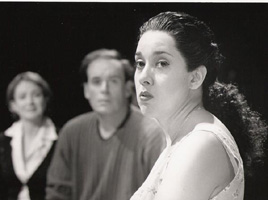 I was on the board for Screen Actors Guild for three years. I worked a lot with Actors’ Equity Association, which is the stage union, the primary thrust when I first turned professional in this business. I got politically active right away. At that time, there were very few people of color in any stage shows on Broadway. If you were a black performer, you got to do a show if there was a black show on Broadway. If there was tap dancing required, then you had a job. And if they were doing a revival of West Side Story, then all the Latinos could work. If they were doing Pacific Overtures, all the Asians could work. But other than that, they basically kept you out. We started a movement, a nontraditional casting project, and the Actors’ Equity Association and the Equal Opportunity’s community there, the EEOC … we started to picket, to institute meetings with producers from the Producers’ League to let them see our side of it. And it did work. By the end of the first three years, Broadway started becoming more integrated. Will Rogers Follies, which was a Broadway show that had predominantly Anglo dances…they said at that period of time in history, there wouldn’t be any African-Americans in the show. We proved them wrong. Stephanie Pope, Broadway singer and dancer, starred in the show and took a part that would have originally been played by a Caucasian. That was huge! We were relegated to chorus, and chorus that was ethnic specific. So things started to change. It wore on me. It was very taxing, but I am really happy that I was involved in that.
I was on the board for Screen Actors Guild for three years. I worked a lot with Actors’ Equity Association, which is the stage union, the primary thrust when I first turned professional in this business. I got politically active right away. At that time, there were very few people of color in any stage shows on Broadway. If you were a black performer, you got to do a show if there was a black show on Broadway. If there was tap dancing required, then you had a job. And if they were doing a revival of West Side Story, then all the Latinos could work. If they were doing Pacific Overtures, all the Asians could work. But other than that, they basically kept you out. We started a movement, a nontraditional casting project, and the Actors’ Equity Association and the Equal Opportunity’s community there, the EEOC … we started to picket, to institute meetings with producers from the Producers’ League to let them see our side of it. And it did work. By the end of the first three years, Broadway started becoming more integrated. Will Rogers Follies, which was a Broadway show that had predominantly Anglo dances…they said at that period of time in history, there wouldn’t be any African-Americans in the show. We proved them wrong. Stephanie Pope, Broadway singer and dancer, starred in the show and took a part that would have originally been played by a Caucasian. That was huge! We were relegated to chorus, and chorus that was ethnic specific. So things started to change. It wore on me. It was very taxing, but I am really happy that I was involved in that. Lastly, where do you see webisodes going in the future?
Lastly, where do you see webisodes going in the future?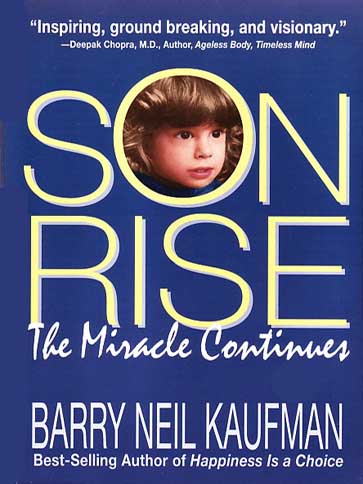

 When special-education teacher Torey Hayden wrote her first bookOne Child almost two decades ago, she created an international bestseller. Her intensely moving true story of Sheila, a silent, profoundly disturbed little six-year-old girl, touched millions. From every corner of the world came letters from readers wanting to know more about the troubled child who had come into Torey Hayden’s class as a “hopeless case,” and emerged as the very symbol of eternal hope within the human spirit.
When special-education teacher Torey Hayden wrote her first bookOne Child almost two decades ago, she created an international bestseller. Her intensely moving true story of Sheila, a silent, profoundly disturbed little six-year-old girl, touched millions. From every corner of the world came letters from readers wanting to know more about the troubled child who had come into Torey Hayden’s class as a “hopeless case,” and emerged as the very symbol of eternal hope within the human spirit.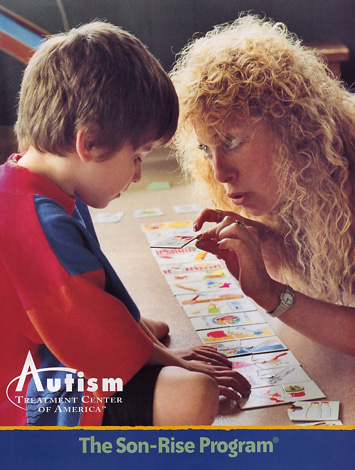















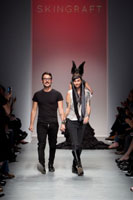







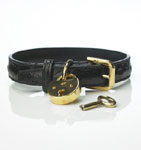
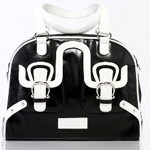

 1. Nikki Dog Bed – Raised Wood Base with Metal Legs – $259 for small, $329.00 for medium, and $439.00 for medium
1. Nikki Dog Bed – Raised Wood Base with Metal Legs – $259 for small, $329.00 for medium, and $439.00 for medium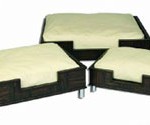

 is perfect for an afternoon of shopping on 5th Ave. This is a product of HDD notaffiliated
is perfect for an afternoon of shopping on 5th Ave. This is a product of HDD notaffiliated ZISC
ZISC